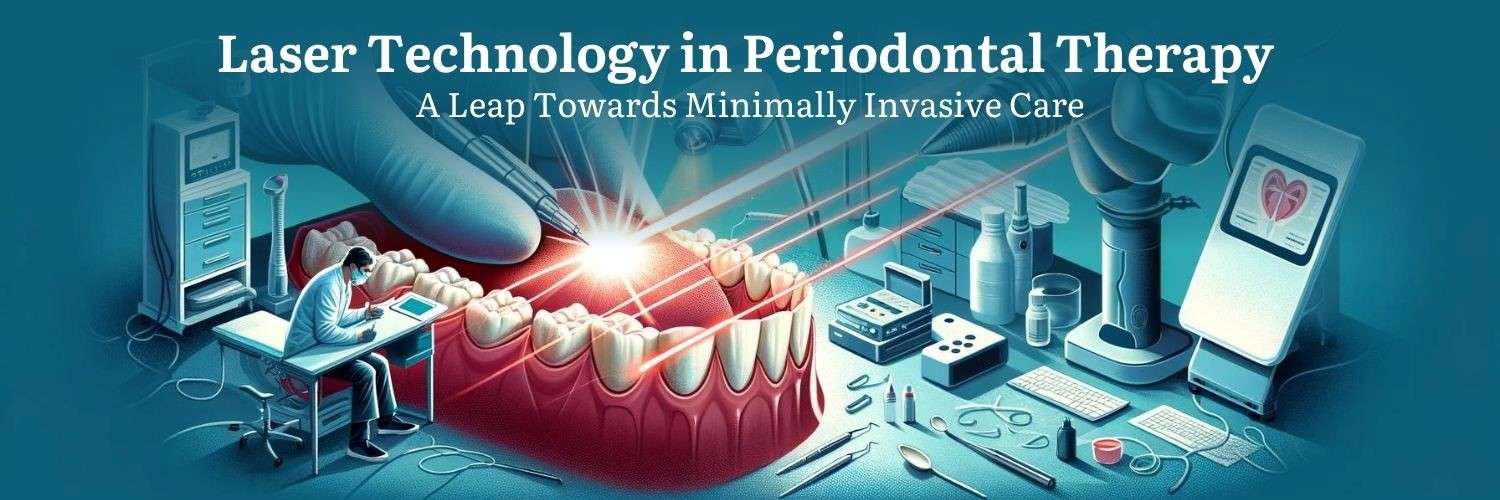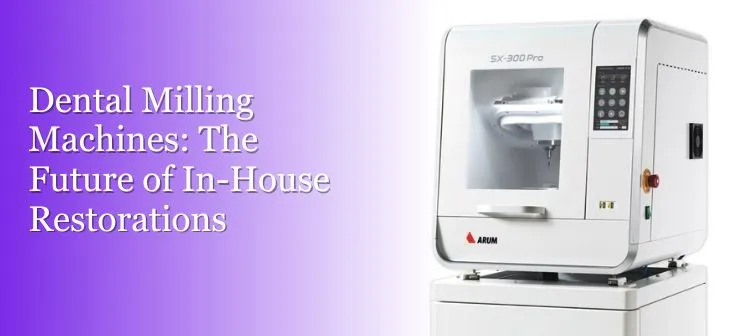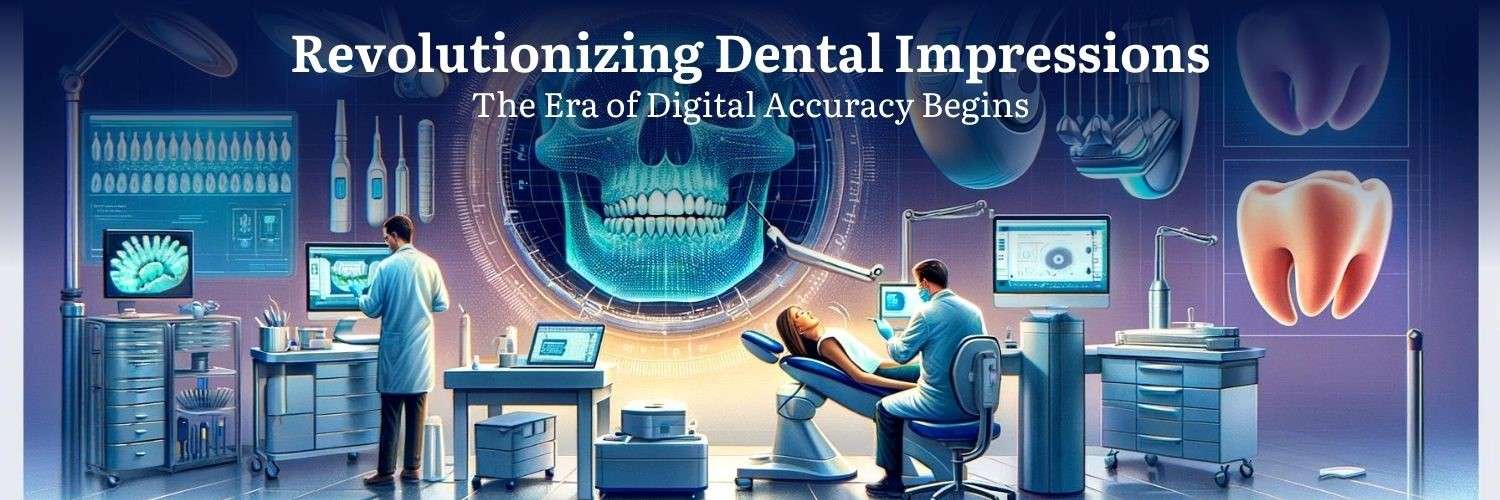Laser Technology in Periodontal Therapy: A Leap Towards Minimally Invasive Care
The landscape of dentistry has undergone a significant transformation over the decades, evolving from the use of traditional, often invasive, methods to the adoption of techniques that prioritize patient comfort and swift recovery. This evolution has been markedly accelerated by the integration of technology in dental care, most notably through the advent of laser technology. Minimally invasive dentistry embodies this shift, focusing on the least invasive options for diagnosis, treatment, and prevention, thereby reducing the trauma associated with dental procedures and enhancing the healing process.
The concept of minimally invasive dentistry is not just a trend but a paradigm shift that reflects a broader movement towards patient-centered care in the medical field. It is rooted in the principle of preservation—of tooth structure, of the patient’s time, and of their comfort. This approach has reshaped patient expectations and set new standards for dental practices worldwide.
At the heart of this transformation is laser technology, which has become a cornerstone for a range of dental procedures, offering a level of precision and efficiency that was previously unattainable. Its application in periodontal therapy, in particular, marks a leap towards a future where dental care is not only effective but also inherently less daunting for patients. Laser technology in periodontal treatment represents more than just an alternative to traditional methods; it is a testament to the dental industry’s ongoing commitment to innovation, patient safety, and the highest standards of care.
As we delve deeper into the application of laser technology in periodontal therapy, it becomes clear that the benefits extend beyond the immediate outcomes of the procedures themselves. This technology plays a crucial role in advancing minimally invasive dentistry, promising a future where dental care is synonymous with comfort, precision, and rapid recovery.

The Mechanism and Effectiveness of Laser Gum Therapy
Laser gum therapy represents a transformative approach in the treatment of periodontal issues, merging the precision of laser technology with the principles of minimally invasive dentistry. At its core, this therapy utilizes specific wavelengths of laser light to target and remove diseased tissue from the gums without harming the surrounding healthy tissue. This precision is paramount in treating periodontal disease, where the removal of infected tissue and the preservation of healthy gums are crucial for successful outcomes.
Mechanism of Laser Gum Therapy
The mechanism behind laser gum therapy is grounded in the selective absorption of laser energy by diseased tissue. Different types of lasers, such as diode lasers and Nd:YAG lasers, are employed based on their unique wavelengths, which are preferentially absorbed by the pigments in diseased cells and the pathogens causing gum disease. This selective absorption allows for the targeted removal of infected tissue and the elimination of harmful bacteria, all while minimizing damage to the surrounding healthy tissues.
Furthermore, laser therapy aids in creating a blood clot, which acts as a natural barrier to protect the exposed bone and nerves and to encourage the regeneration of the gums. This aspect of laser therapy not only aids in the healing process but also reduces the risk of infection post-treatment, enhancing the overall effectiveness of periodontal therapy.
Effectiveness of Laser Gum Therapy
The effectiveness of laser gum therapy lies in its ability to treat periodontal disease with minimal discomfort and downtime for the patient. Studies have shown that patients undergoing laser therapy experience less pain and swelling compared to traditional surgical methods, contributing to a more comfortable recovery process. Additionally, the precision of laser therapy reduces the need for sutures and decreases the risk of bleeding during and after the procedure, further improving the patient experience.
Another significant advantage of laser gum therapy is its bactericidal effect. The laser energy effectively kills bacteria within the periodontal pockets, reducing the bacterial load and helping to prevent further disease progression. This bactericidal action, coupled with the stimulation of tissue regeneration, promotes a healthier oral environment conducive to long-term gum health.

Laser Technology in Periodontal Therapy: An Overview
The integration of laser technology into periodontal therapy has marked a significant milestone in the evolution of dental treatments. Lasers offer a versatile and effective approach to managing gum disease, from early detection to advanced treatment. This versatility is evident in the range of laser types available, each suited to specific aspects of periodontal care. Among these, soft tissue lasers and periodontal treatment lasers stand out for their efficacy and precision.
Soft Tissue Lasers in Periodontal Therapy
Soft tissue lasers are specially designed to interact with gum tissue, making them an invaluable tool in the treatment of gum disease. They work by delivering a concentrated beam of light that can cut or vaporize gum tissue with extreme precision. This capability is particularly beneficial for procedures such as gingivectomy, gingivoplasty, and the removal of diseased tissue within periodontal pockets. Soft tissue lasers minimize bleeding and swelling, reducing discomfort and speeding up the healing process for patients.
Periodontal Treatment Lasers
Periodontal treatment lasers, including diode lasers and Nd:YAG lasers, are tailored for the targeted management of periodontal disease. They are employed to remove infected tissue from the periodontal pocket and to eliminate the bacteria causing the infection. These lasers can reach areas that are challenging for traditional tools, providing a thorough cleaning and promoting the regeneration of healthy tissue. The precision of periodontal treatment lasers also reduces the risk of damaging surrounding healthy tissue, ensuring a focused and effective treatment.
Biolase Epic X: A Pioneering Soft Tissue Laser
Among the leading technologies in laser periodontal therapy is the Biolase Epic X, a state-of-the-art soft tissue laser renowned for its efficiency, versatility, and minimal discomfort. The Epic X is designed for a wide range of periodontal procedures, offering unmatched precision in the removal of diseased tissue and the treatment of gum disease. Its advanced features allow for not only the cutting and vaporizing of tissue but also for biostimulation processes, which can enhance tissue regeneration and healing.
The Biolase Epic X distinguishes itself with its user-friendly design and the ability to deliver treatments with less pain and faster healing times compared to conventional methods. Its application extends beyond traditional periodontal therapy, encompassing pain therapy and teeth whitening, making it a multifunctional tool in the arsenal of modern dental professionals.

Comparative Analysis: Laser vs. Traditional Periodontal Treatments
The treatment of periodontal disease has traditionally relied on surgical and nonsurgical methods that, while effective, often involve considerable discomfort, longer healing times, and a higher likelihood of complications. The advent of laser gum therapy has introduced a new paradigm in periodontal care, offering a minimally invasive alternative that promises enhanced efficacy, improved patient comfort, and expedited recovery. This comparative analysis delves into the distinctions between laser and traditional periodontal treatments across these critical factors.
Efficacy of Treatment
Traditional Methods: Conventional periodontal therapy often involves scaling and root planing (SRP) for mild cases and flap surgery for more severe instances of gum disease. These methods are effective in removing plaque and tartar from deep periodontal pockets and reducing inflammation. However, the mechanical nature of these treatments can sometimes leave behind bacteria and may not completely halt the progression of periodontal disease.
Laser Gum Therapy: Laser therapy, on the other hand, offers a more targeted approach to removing diseased tissue and eradicating pathogens without affecting the surrounding healthy tissue. The precision of the laser beam allows for the thorough decontamination of periodontal pockets, potentially reducing the likelihood of recurrence. Studies have indicated that when combined with SRP, laser therapy can result in improved attachment levels and deeper pocket depth reductions compared to SRP alone.
Patient Comfort and Experience
Traditional Methods: Traditional periodontal surgery can be invasive, often requiring incisions and sutures, which can lead to post-operative pain, swelling, and bleeding. The recovery period can be uncomfortable, necessitating pain medication and limiting daily activities until healing progresses.
Laser Gum Therapy: Laser treatments are heralded for their ability to minimize discomfort during and after procedures. The minimally invasive nature of laser therapy reduces the need for cuts and stitches, resulting in less pain and swelling. Patients frequently report a more pleasant treatment experience and a quicker return to normal activities. Additionally, the reduced anxiety associated with laser treatments can be particularly beneficial for patients with dental phobias.
Healing Times and Recovery
Traditional Methods: The healing process following traditional periodontal surgery can be lengthy, often taking several weeks. The recovery is usually accompanied by a regimen of pain management and careful monitoring to avoid infection or complications at the surgical sites.
Laser Gum Therapy: In contrast, the healing times associated with laser gum therapy are significantly reduced. The laser’s ability to promote clot formation and stimulate tissue regeneration leads to faster wound healing. Moreover, the antibacterial effect of the laser aids in reducing the risk of post-operative infections, facilitating a smoother and quicker recovery process.
Case Studies and Data
Illustrative case studies and clinical data further underscore the advantages of laser therapy over traditional methods. For instance, a study published in the Journal of Periodontology compared patients treated with traditional surgery to those treated with laser therapy. The laser group exhibited faster healing times, less discomfort, and more positive outcomes in terms of pocket depth reduction and attachment gain.


Advancements and Innovations in Laser Dentistry
Laser dentistry has experienced remarkable growth and innovation, significantly impacting how dental professionals approach treatment for gum disease and other oral health issues. These advancements are not just enhancing the capabilities of dental lasers but are also making procedures more efficient, less invasive, and more comfortable for patients. This exploration of recent breakthroughs and developments in laser dentistry highlights the dynamic nature of this field and its contribution to the evolution of minimally invasive dentistry.
Enhanced Precision and Control
One of the most significant advancements in dental laser technology is the improvement in precision and control. Modern laser systems, equipped with sophisticated software and adjustable settings, allow dental professionals to customize treatments based on the specific needs of each patient. This level of control is particularly beneficial in periodontal therapy, where the ability to precisely target diseased tissue without affecting surrounding areas can make a substantial difference in treatment outcomes.
Multi-Wavelength Laser Systems
The development of multi-wavelength laser systems marks another leap forward for laser dentistry. These systems combine different types of lasers in one device, offering versatility to perform a wide range of dental procedures, from soft tissue surgeries to hard tissue applications like cavity preparation and bone shaping. This versatility simplifies the treatment process, allowing dental professionals to address multiple issues without the need for multiple devices.
Minimally Invasive Techniques for Gum Disease
In the treatment of gum disease, laser dentistry has introduced techniques that are far less invasive than traditional surgery. Laser-assisted new attachment procedure (LANAP) and laser-assisted periodontal therapy (LAPT) are examples of such techniques, offering a no-cut, no-sew option for treating periodontitis. These procedures not only reduce patient discomfort and recovery time but also show promising results in tissue regeneration and attachment gain.
Improved Patient Comfort and Experience
Advancements in laser dentistry extend beyond treatment capabilities to include patient comfort and experience. Innovations in laser technology have led to procedures that are virtually painless, significantly reducing the anxiety and discomfort associated with dental visits. For instance, some laser treatments can be performed without the need for local anesthesia, making dental care more accessible to patients who are sensitive to injections or have needle phobias.
Integration with Digital Dentistry
The integration of laser technology with digital dentistry tools, such as digital imaging and computer-aided design and manufacturing (CAD/CAM), represents another frontier in dental care. This integration allows for more accurate diagnosis, planning, and execution of treatments, enhancing the precision of laser applications and the overall effectiveness of dental procedures.
Future Directions
The future of laser dentistry promises even more exciting developments, with ongoing research focusing on new applications and technologies. Innovations in laser wavelengths, pulse durations, and delivery systems are continuously being explored, with the potential to unlock new treatment possibilities and further improve patient outcomes.

Implementing Laser Technology in Dental Practice
Integrating laser technology into a dental practice represents a significant step forward in offering patients advanced, minimally invasive treatment options. This adoption, however, comes with its set of considerations to ensure the technology aligns with the practice’s needs, enhances patient care, and ultimately contributes to the practice’s success. Here are key insights and tips for dental professionals contemplating this innovative leap.
Understanding the Scope of Laser Applications
Before investing in laser technology, it’s crucial for dental practitioners to comprehensively understand the various applications of dental lasers. From soft tissue procedures, such as gum reshaping and periodontal therapy, to hard tissue applications, like cavity preparation and bone surgery, the versatility of lasers is vast. Familiarity with the breadth of laser applications ensures that practitioners select equipment that maximizes their practice’s treatment offerings.
Assessing Practice Needs and Patient Demographics
Evaluating the practice’s specific needs and the demographics of the patient base is essential in guiding the selection of laser equipment. A practice with a high volume of periodontal cases might benefit more from a soft tissue laser, such as the Biolase Epic X, known for its efficacy in gum disease treatment. Conversely, practices focusing on restorative dentistry might prioritize hard tissue lasers for their ability to cut through enamel with precision.
Investment and Return on Investment (ROI)
The financial aspect of integrating laser technology cannot be overlooked. While the initial investment can be significant, the ROI should be evaluated in terms of expanded treatment capabilities, improved efficiency, and increased patient satisfaction leading to higher retention and referral rates. Practices should conduct a cost-benefit analysis, considering not only the purchase price but also training, maintenance, and operational costs against the potential for increased procedure volume and pricing.
Training and Certification
Proficiency in laser dentistry is paramount to ensure safety and the effectiveness of treatments. Dental professionals should seek comprehensive training and certification programs to gain a deep understanding of laser physics, tissue interactions, and specific protocols for various treatments. Many laser manufacturers offer specialized training for their equipment, which can be an invaluable resource for practitioners and their teams.
Compliance and Regulation
Understanding and adhering to local regulations and standards for laser use in dentistry is crucial. This includes any licensing requirements, safety standards, and patient consent protocols. Compliance not only ensures the legal operation of laser technology in the practice but also reinforces patient trust in the practice’s commitment to safety and professional integrity.
Equipment Selection and Support
Choosing the right laser equipment involves evaluating the technology’s ease of use, reliability, and the manufacturer’s support and service. Features such as adjustable settings for different procedures, portability, and intuitive design can enhance the user experience. Additionally, strong after-sales support, including customer service, warranty, and access to repairs, is vital for minimizing downtime and maintaining the continuity of care.
Embracing Marketing and Patient Education
Integrating laser technology presents an opportunity to market the practice as a leader in advanced dental care. Effective patient education on the benefits of laser treatments, such as reduced discomfort and faster healing, can enhance patient acceptance and demand for laser-based procedures. Utilizing the practice’s website, social media, and in-office materials to highlight laser capabilities can attract new patients looking for cutting-edge dental solutions.
Conclusion and Looking Forward
The integration of laser technology into periodontal therapy represents not merely an advancement in dental care but a paradigm shifts towards more humane, patient-centric treatment methodologies. This journey from traditional, often invasive procedures to minimally invasive laser techniques underscore a broader movement within dentistry towards embracing technological innovation for improved patient outcomes. The transformative potential of laser technology has begun to be realized, offering a glimpse into a future where dental care is synonymous with precision, comfort, and rapid recovery.
The benefits of laser technology in periodontal therapy—ranging from its efficacy and patient comfort to reduced healing times—highlight its role as a game-changer in dental treatments. As we look to the future, the ongoing advancements in laser dentistry promise even greater enhancements in how dental professionals diagnose, treat, and manage oral health conditions. The focus on minimally invasive dentistry, fueled by laser technology, is set to expand, bringing forth new possibilities for treating a wide array of dental issues beyond periodontal disease, including tooth decay, cosmetic adjustments, and even nerve regeneration.
The growing importance of adopting advanced technologies in dental practices cannot be overstated. Dental professionals are encouraged to stay abreast of the latest developments in laser equipment and techniques, continually integrating these innovations into their practices to offer state-of-the-art care to their patients. As research progresses and new advancements emerge, the dental community must remain open and adaptable, ready to embrace new tools that can further elevate the standard of care.





Leave a comment